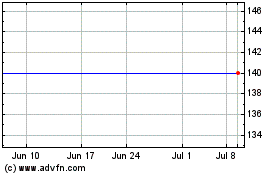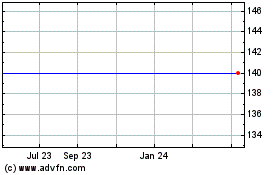UNITED STATES
SECURITIES AND EXCHANGE COMMISSION
Washington, D.C. 20549
FORM SD
Specialized Disclosure Report
Sigma-Aldrich Corporation
(Exact name of registrant as specified in charter)
|
| | |
Delaware | 000-08135 | 43-1050617 |
(State or other jurisdiction of incorporation or organization) | (Commission File Number) | (IRS Employer Identification No.) |
| | |
3050 Spruce Street St. Louis, Missouri (Address of principal executive offices) | | 63103 (Zip Code) |
George L. Miller, Senior Vice President, General Counsel and Secretary
(314) 771-5765
(Name and telephone number, including area code, of the person to contact in connection with this report.)
Check the appropriate box to indicate the rule pursuant to which this form is being filed, and provide the period to which the information in this form applies:
[X] Rule 13p-1 under the Securities Exchange Act (17 CFR 240.13p-1) for the reporting period January 1 to December 31, 2014.
Section 1 – Conflict Minerals Disclosure
Item 1.01 Conflict Minerals Disclosure and Report
Conflict Minerals Disclosure
In accordance with Rule 13p-1 under the Securities Exchange Act of 1934 (“Rule 13p-1), Sigma-Aldrich (or the “Company”) submits this Conflict Minerals Disclosure to report for the calendar year covered by the specialized disclosure report.
A copy of the Company’s Conflict Minerals Report is provided as Exhibit 1.01 to this Form SD, and is publicly available at www.sigmaaldrich.com under “Investor Relations.” The website and information accessible through it are not incorporated into this document.
Item 1.02 Exhibit
As specified in Section 1, Item 1.01 of this Form SD, the Company is hereby filing its Conflict Minerals Report as Exhibit 1.01 to this report.
Section 2 – Exhibits
Item 2.01 Exhibits
The following exhibit is filed as part of this report:
Exhibit 1.01 — Conflict Minerals Report as required by Items 1.01 and 1.02 of this Form.
SIGNATURES
Pursuant to the requirements of the Securities Exchange Act of 1934, the registrant has duly caused this report to be signed on its behalf by the duly authorized undersigned.
|
| | | | |
SIGMA-ALDRICH CORPORATION | | | |
(Registrant) | | | |
| | | | |
By: | /s/ George L. Miller | | | |
| George L. Miller Senior Vice President, General Counsel and Secretary | | | |
| | | | |
Date: | June 1, 2015 | | | |
| | | | |
Exhibit Index
|
| |
Exhibit No. | Description |
1.01 | Conflict Minerals Report of Sigma-Aldrich Corporation |
Exhibit 1.01
Sigma-Aldrich Corporation
Conflict Minerals Report
For the reporting period from January 1, 2014 to December 31, 2014
This Conflict Minerals Report (the “Report”) of Sigma-Aldrich Corporation (the “Company”) has been prepared pursuant to Rule 13p-1 and Form SD (the “Rule”) promulgated under the Securities Exchange Act of 1934 for the reporting period January 1, 2014 to December 31, 2014.
The Rule requires disclosure of certain information when a company manufactures or contracts to manufacture products for which the minerals specified in the Rule are necessary to the functionality or production of those products. The specified minerals, which are collectively referred to in this Report as the “Conflict Minerals,” are gold, columbite-tantalite (coltan), cassiterite and wolframite, including their derivatives, which are limited to tantalum, tin and tungsten. The “Covered Countries” for the purposes of the Rule and this Report are the Democratic Republic of the Congo, the Republic of the Congo, the Central African Republic, South Sudan, Uganda, Rwanda, Burundi, Tanzania, Zambia and Angola. As described in this Report, certain of the Company’s operations manufacture, or contract to manufacture, products for which the Conflict Minerals are necessary to the functionality or production of those products.
The Company is a leading life science and technology company focused on enhancing human health and safety and manufactures and distributes 230,000 chemicals, biochemicals and other essential products and 40,000 equipment products to more than 1.4 million customers globally in research and applied labs as well as in industrial and commercial markets. With three distinct business units – Research, Applied and SAFC Commercial – the Company is committed to enabling science to improve the quality of life. The Company operates in 37 countries and sells into approximately 160 countries, serving roughly 100,000 accounts worldwide. The Company manufactures or contracts to manufacture approximately 138,000 of the 270,000 products it sells.
Description of the Company’s Products Covered by this Report
This Report relates to products: (i) for which Conflict Minerals are necessary to the functionality or production of that product; (ii) that were manufactured, or contracted to be manufactured, by the Company; and (iii) for which the manufacture was completed during calendar year 2014.
Only six of the Company’s products have been determined to be “DRC conflict undeterminable” (which products are referred to in this Report collectively as the “Reported Products”); such Reported Products consist of the following: research standards containing tantalum, tin, tungsten and gold used by businesses for environmental testing purposes. The Reported Products represented less than one five-hundredths of 1% of the Company’s net sales in 2014.
The Company’s Due Diligence Process
The Company has conducted a good faith reasonable country of origin inquiry regarding the Conflict Minerals included in its products. This good faith reasonable country of origin inquiry was reasonably designed to determine whether any of the Conflict Minerals originated in the Covered Countries and whether any of the Conflict Minerals may be from recycled or scrap sources. The Company also exercised due diligence on the source and chain of custody of the Conflict Minerals. The Company designed its due diligence measures in an effort to conform to the framework in the Organisation for Economic Co-operation and Development Due Diligence Guidance for Responsible Supply Chain of Minerals from Conflict-Affected and High Risk Areas: Second Edition, including the related supplements on gold, tin, tantalum and tungsten (the “OECD Guidance”).
In 2011, the Company determined it was in the Company’s and its shareholders’ best interests to make efforts to keep the Company’s supply chain “DRC Conflict Free.” Accordingly, the Company updated its Supplier Code of Conduct in December 2012 and its terms and conditions of purchase and form supply agreement in January 2013 to reflect that suppliers shall not provide to the Company any Conflict Minerals mined from any of the Covered Countries that contribute to armed conflict or human rights abuses within the region. The Company has and continues to update such documents as its supply chain controls and procedures continue to evolve. Upon request, suppliers are required to provide the Company country of origin information for these minerals. If the Company has reason to believe the minerals originated in any Covered Countries and contributed to the armed conflict or human rights abuses there, the Company may in its discretion discontinue such procurement activity with such supplier. The Company also adopted a Conflict Minerals Policy to define different departments’ roles and responsibilities in order to support compliance with the Rule. The policy sets forth the Company’s process for conducting its reasonable country of origin inquiry and preparing its applicable disclosure according to Securities and Exchange Commission requirements.
In order to initiate its reasonable country of origin inquiry, the Company first identified the products the Company manufactures or contracts to manufacture that contain any Conflict Minerals. The Company conducted a detailed review of all products manufactured or contracted to be manufactured during 2014.
The Company generated a product list based on both a keyword query of the component parts of, and a chemical structure review of, its product portfolio. The keyword query searched for the mineral names tantalum, tin, tungsten and gold, as well as synonyms for the minerals including coltan, columbite, tantalite, cassiterite, stannous, stannic, stannane, stannylium, methyltin, butyltin, ethyltin, phenyltin, acquatin, fentin, octyltin, tin oxide, aurous, auric, wolframite, ferberite and hubnerite. The Company vetted the list to remove any (1) false positives in which a product was identified that did not truly contain any Conflict Minerals, (2) products in which the Conflict Minerals were naturally occurring rather than intentionally added, (3) products in which the Conflict Minerals were not necessary to the functionality or production of the product, (4) products containing a Conflict Mineral that was purchased before 2013. As a result of this process, the Company determined that approximately eleven of the approximately 138,000 products it manufactured or contracted to manufacture in 2014 contained Conflict Minerals that were necessary to the functionality or production of such product and were not naturally occurring by-products (collectively, the “Covered Products”).
The Company then identified the suppliers of the Conflict Minerals contained in the Covered Products in order to conduct a supply chain survey of direct suppliers. Starting in 2011, the Company began to notify suppliers it would soon be requesting origin information annually. During the period from January to April 2015, the Company contacted all such suppliers in order to obtain responses using an internally-developed origin information collection form designed to determine whether any of the Conflict Minerals were from scrap or recycled sources or originated in any of the Covered Countries.
The Company’s supply chain with respect to the Covered Products is complex, and there are many intermediaries in the supply chain between the ultimate manufacture of the Covered Products and the original sources of Conflict Minerals. In this regard, the Company does not purchase Conflict Minerals directly from mines, smelters or refiners. The Company therefore relied on its direct suppliers to provide information regarding the origin of Conflict Minerals that are included in the Covered Products.
The supplier responses received by the Company were based on the supplier’s actual knowledge and/or the knowledge of its supplier.
In the case of the Conflict Minerals contained in 5 of the 11 Covered Products, the supplier indicated that its supply chain had been declared conflict free by an independent auditor assigned by the Electronic Industry Citizenship Coalition (EICC) and Global e-Sustainability Initiative as part of the Conflict-Free Smelter (CFS) Validation Program; however, the Company was unable to determine whether the Conflict Minerals sourced from that supplier and included in those 5 Covered Products actually originated in any
of the Covered Countries. In the case of the remaining 6 of the 11 Covered Products (referred to above as the Reported Products), after completion of the due diligence process, the Company was unable to determine due to inadequate supplier response whether or not the Conflict Minerals contained in each of such Reported Products originated in the Covered Countries or qualified as “DRC conflict free,” as defined under the Rule. Because the Company was unable to determine the country of origin of the Conflict Minerals contained in the Reported Products and the facilities used to process such minerals, or whether such minerals came from scrap or recycled sources, the Company has determined that each of the Reported Products is “DRC conflict undeterminable,” as defined in the Rule. As stated above, such Reported Products represented less than one five-hundredths of 1% of the Company’s net sales in 2014.
The Company expects to take the following steps, among others, to improve its due diligence measures and to further mitigate the risk that the necessary Conflict Minerals contained in the Company’s products benefit armed groups in any Covered Countries: (i) having already identified all Conflict Minerals used in products manufactured or contracted to be manufactured by the Company, implementing a process to review and identify when new minerals are purchased, including a restriction on purchase requisition until screening has received and reviewed a completed origin declaration; (ii) continuing to engage with suppliers in an effort to obtain current, accurate and complete information about the supply chain; and (iii) requiring suppliers to implement responsible sourcing and requiring them to encourage smelters and refiners to obtain a “conflict-free” designation from an independent, third-party auditor.
(MM) (NASDAQ:SIAL)
Historical Stock Chart
From Mar 2024 to Apr 2024

(MM) (NASDAQ:SIAL)
Historical Stock Chart
From Apr 2023 to Apr 2024
